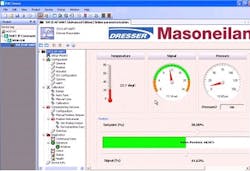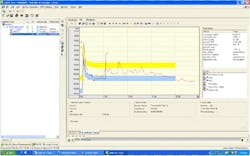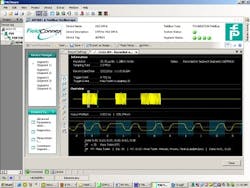FDT--Your APP for Smart Device Information Integration!
By Garry Cusick, MACTek Corporation, a FDT member company
Our last article discussed how technology has changed over the years and how "enabled" devices, such as smart phones and microprocessor-based instrumentation, can make us more productive. In this issue, we discuss how FDT provides the "enabling" features for process automation the same way the "app" does for "smart phones." In fact, the DTM (device type manager) is an application (app) developed by the device manufacturers to ensure you get the best value from their products.
Your smart phone allows you to go to the app store and download samples of multiple products so that you can choose the app that is right for you. Let's take weather, for example; you can download an app that will tell you the temperature based on your smart phone location at any given time, or maybe you simply want to know if it's raining at your mom's house in Wisconsin―either way, there's an app designed for your needs. FDT technology enables you to shop for the instrumentation and diagnostic tools that are targeted at your application needs and you feel are best-in-class.
The host application (DCS, asset management systems, safety system, etc.) needs to know how to access and use the powerful features included in your intelligent field devices. The app/DTM enables the host application with necessary instructions to present the information available from the device organized in a consistent and useful format. The devices are most likely the intelligent field devices you currently use today and can be HART, Foundation fieldbus, Profibus or other field protocol-enabled devices. Here are a few examples.
Figure 2 shows the echo curve from the DTM that is provided with an Endress+Hauesr Micropilot Radar Level transmitter. Now if you are like me, at first glance, this is a nice graph with a lot of squiggly lines. For those of us that are sporting grey hair, I'm sure many of you have had an echo cardiogram and although amused by the similar lines being drawn on the paper, you, like me, had no idea whether the results were good or bad until the doctor reviewed the report with you. But that confusion can be easily remedied, as the echo curve in the Endress+Hauser DTM can be easily exported in a PDF document and faxed or emailed to the Endress+Hauser echo curve specialist. With a quick examination, you will know if your transmitter is working properly, and in most instances, the specialist can tell you exactly where your problem lies. Remember when you had to wait for the technician to drive to your plant?
In Figure 3, we move from the instrument to the network. The FieldConnex DTM from Pepperl+Fuchs assists with commissioning, troubleshooting and documenting Foundation fieldbus (FF) and Profibus PA (PA) networks. The intuitive genius of this DTM is that the primary diagnostic routine is executed at the touch of a button by starting the Commissioning Wizard. You can watch as the FieldConnex DTM analyzes the network and provides you with a PDF report at the end. This report and DTM are valuable tools in documenting your FF and PA segments during commissioning and assisting with variances on the network in years to come. Should an issue be discovered by the wizard, the DTM includes many diagnostic windows, as well as a full functioning oscilloscope that enables you to trap and analyze communication between your devices.
To check out the latest certified DTMs available, please visit, http://www.fdtgroup.org/product-catalog/certified-dtms.




